Brick fence in landscape design

Brick has been used in the formation of barriers, capital fences for a very long time. Its reliability is so great that before the invention of reinforced concrete, only brick structures were a serious alternative to natural stone in fortifications. But people's attention to such a decision is caused not only by its undoubted strength, but also by its external attractiveness. Importantly, people can determine for themselves how high a barrier they need, and what shape it will be. Ready-made reinforced concrete slabs, mesh and other such freedom do not give.
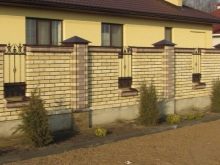
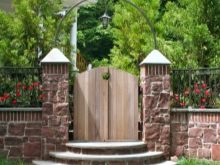
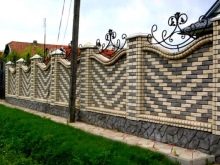
Peculiarities
The key advantages of brick fences in comparison with others can be considered:
- excellent durability;
- attractive appearance;
- the possibility of combining with houses and plots decorated in any style.


The use of facing bricks is recommended when creating decorative masonry. This material is completely ready-made, does not require additional processing, the variety of its colors and textures allows to bring to life the most sophisticated design ideas.
If you wish, you can complement the brick fence with stone, wood, stylish art forging. The latter option is advisable if you want to create an environment that is outwardly interesting and not too flashy.

The universal brick fence can be easily redesigned if necessary: if necessary, you can quickly increase its height, lower it, and the structure will look just as attractive. Both from the outside and from the side of a private house from the yard, the appearance will be exactly the same. Depending on the wishes of the customers, it is possible to arrange an additional fence, the masonry is plastered or covered with panels corresponding to the design of the dwelling.
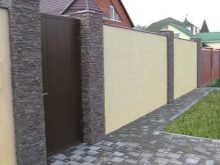

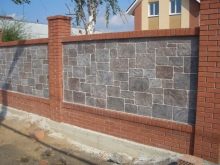
However, even a brick that has not undergone additional decoration looks very good.
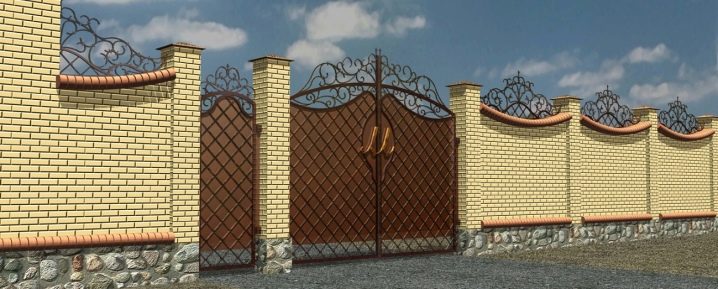
Calculation of materials
It is very important to calculate the exact need for a brick, and it is not difficult. If the wall is made single-layer, its square meter is created from 100 blocks, and the double type of masonry already requires about 200 bricks in the same area.
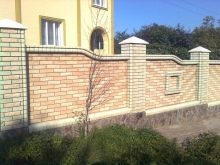
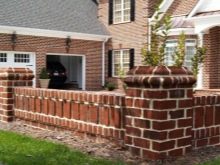
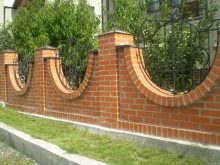
Determine the required height and depth of the barrier; if it is more decorative in nature, construction of ½ brick is permissible, in which the elements are laid with the elongated side along the allotted line. But if you want to strengthen the defense of your territory, use at least one and a half bricks.

How high the structure should be is determined individually: sizes from 50 to 350 cm are practiced, higher fences are made only occasionally.
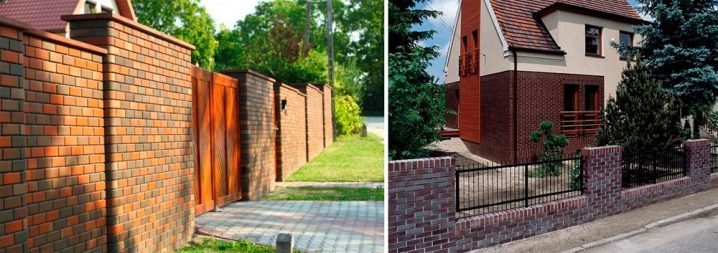
Please note that errors in determining the properties of the fence threaten not only technical, but also legal problems. In some cases, it is better to familiarize yourself with the provisions of regulations, building codes and regulations. Violating them, for example, in the country, you can get a fine. Or even an order to demolish an illiterately erected structure.
It is better to enclose all summer cottages and garden plots with structures no more than 150 cm in height, and exclusively from nets or gratings based on various materials.
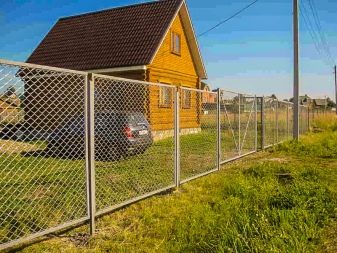

An exception can be made only with the general consent of the participants of dacha associations, whose meeting is entitled to allow impenetrable barriers no more than 220 cm. These restrictions are due to concern for good lighting of all sections and public roads.If you do not want to confine yourself to a lattice, you want to not break the law at the same time, you can indent in depth so that shading does not actually occur.
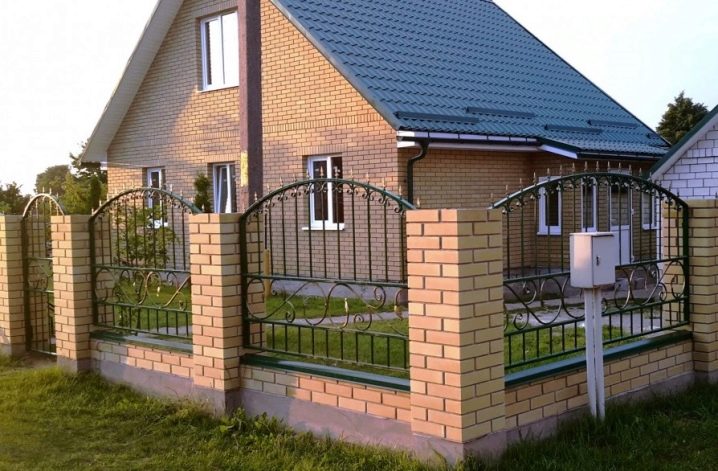
Such prohibitions do not apply to individual residential construction at all, except for situations when they operate within the framework of a regional law.

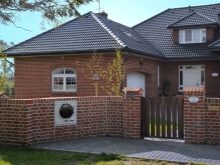
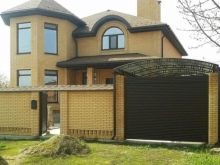
If the thickness of the structure is the same, but its shape is different, the material consumption can vary widely. So, on standard 0.06 hectares, you can put a square fence (its perimeter is about 98 m), or a triangular fence - then the total length of the contours will increase to 112 m. adapt to the actual configuration of the earth.
An accurate calculation is easiest to do, focusing on the data of the cadastral plan, then you do not have to deal with independent measurements.
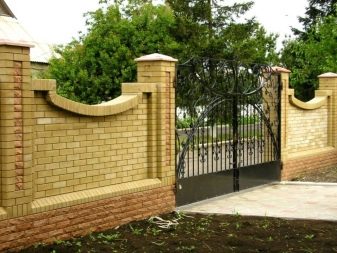
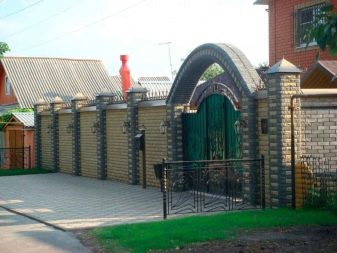
When using sand-lime bricks, the dimensions will be the same as when using the standard version.


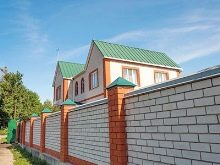
To calculate the consumption of concrete for organizing the foundation for the fence, you will have to multiply the width of the base with the height and total length.
Important: above the ground, the concrete must be raised by at least 0.1 m.
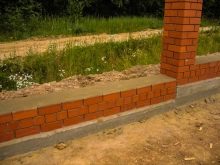

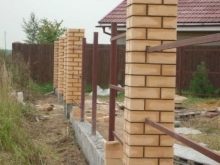
Intending to build a fence of Slavic bricks, be guided by the size of the products included in the collection you like. Most often, they acquire the so-called "normal" size, single (equal to the traditional) or "euro" (0.7).
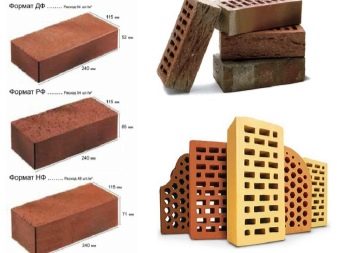
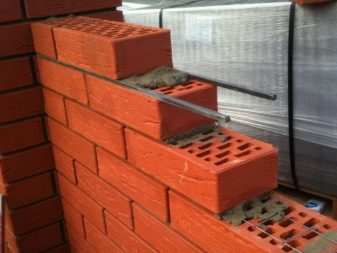
Do not forget to calculate the consumption of those materials with which it was decided to decorate the finished fence.
Approximate consumption of raw materials when receiving 1 cu. m of concrete in an artisanal way is about 3 centners of cement, 10 centners of washed sand and gravel. Up to 0.3 cubic meters are consumed per cubic meter of brickwork. m of mortar - this figure has already included the probable losses, which are inevitable even with very professional work.

If it is decided to create a sectional barrier, the need for building blocks and concrete mortar for single sections and pillars is calculated, after which the resulting indicator is multiplied by the required number.
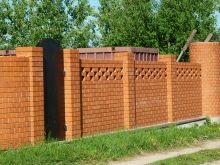
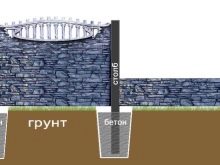

When it is necessary to calculate the need for materials for decorative masonry, the scheme is similar - but deductions are made for voids or additions for a cornice, for each dart and decoration element.
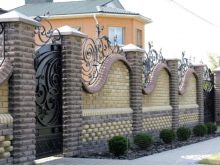
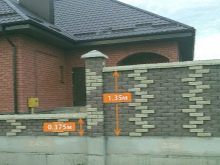
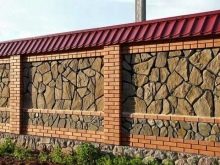
Types of masonry
Technologists and builders have developed various types of brickwork, one of the most modern and attractive options is considered lego system... Compared to using the classic type of blocks, the speed of work is significantly increased, and special training is minimized. They simply apply the upper row to the lower one in an intuitive way, after which they are glued with construction glue. Lego bricks are hollow inside, which greatly facilitates their transportation and movement directly on the construction site, and reduces labor intensity.

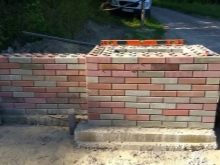
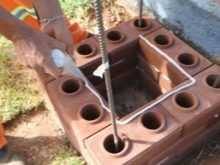
The use of hyper-pressed material is advisable in the case when even the protection provided by the classic type of masonry is not enough for you. It is a very durable and stable product, and it is critical that the manufacturer adheres to the technology. If it is violated, then cracks and defects will inevitably appear even with the most accurate work, and the service life of the fence will be sharply reduced. As for the increased thermal conductivity, this indicator does not have any significant value in the construction of fences.

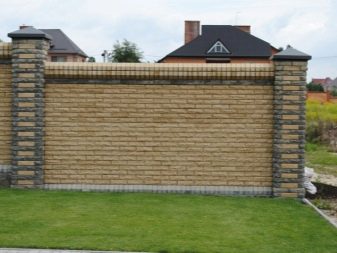
Bavarian masonry brick opens up a number of important possibilities; strictly speaking, this is not so much a special method as a specific material. You can see it in any old building, and not only on German territory, but also in all other European states. The essential feature of the Bavarian approach is that the outer side of the material is painted in a variety of tones and forms unusually attractive patterns.For centuries, no efforts of the masters have allowed to create a good monotonous color of bricks. And so they began to turn a disadvantage into a dignity.
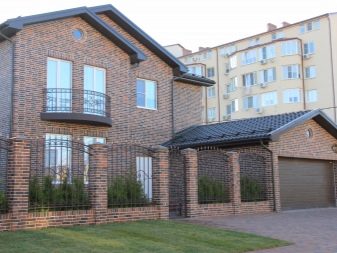
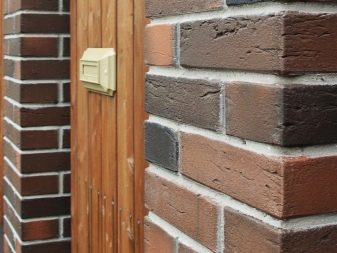
What was considered a problem in the past, today has completely turned into a characteristic feature of the country or Provence style, into a way to emphasize the elegance of the old look of the fence.
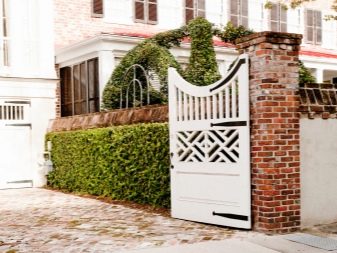
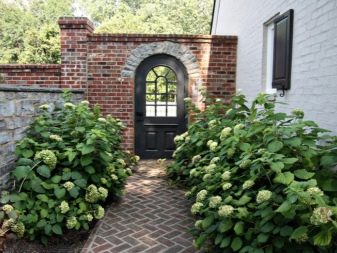
Bavarian brick is made using a specific technology, at the end of its firing, the oxygen concentration in the furnace is increased so that the composition of the clay changes due to chemical reactions. Therefore, the outer layer is colored differently. The glassy mass takes a minimum of 0.2 and a maximum of 0.4 cm in thickness. The brick obtained by the South German method, even under the most unfavorable combination of circumstances, will not be covered with efflorescence.
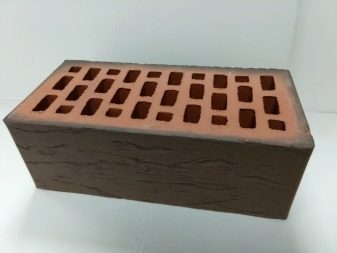
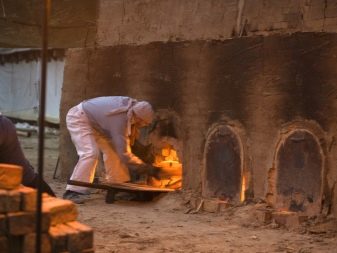
The width of the blocks is completely standard, but its appearance has stepped forward a lot in recent years. The engineers managed to figure out how to make the shape of the stains very intricate, combining these findings with the creation of smooth or textured surfaces.
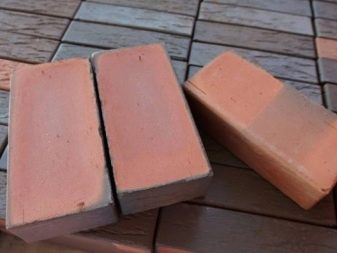

Experts do not recommend using more than four shades for one part of the fence - this will only complicate the work and the selection of the necessary components.
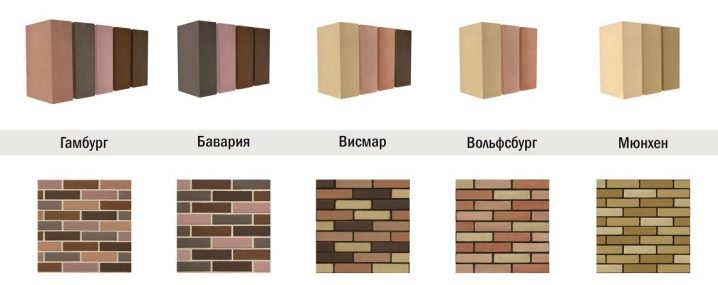
Important: the key color covers at least ½ of the entire area, and the remaining two or three tones are distributed randomly as you see fit.
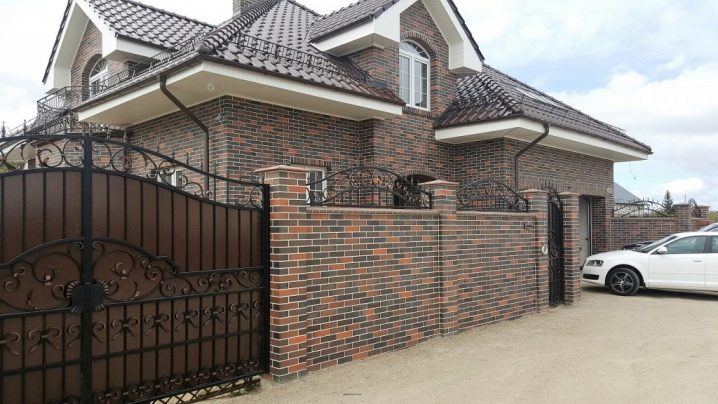
Construction technology
Most often, they still use not original design techniques, but quite traditional methods of laying bricks. Variety is introduced by different geometric structures and individual structural elements. The sectional version of the fence differs from the solid one in that the wall is reinforced with supports located at a distance of 250 - 450 cm.
Since the installation of supports depends on the magnitude of the applied load, the thinner the obstacle created, the less often the posts can be mounted.
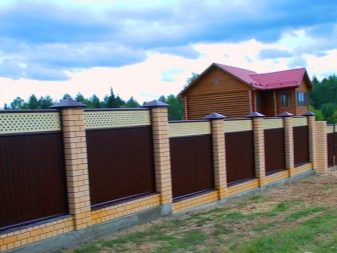

Whether the focus is on maximum durability or design, the working method is roughly the same. First of all, markup is created according to which the foundation needs to be poured.
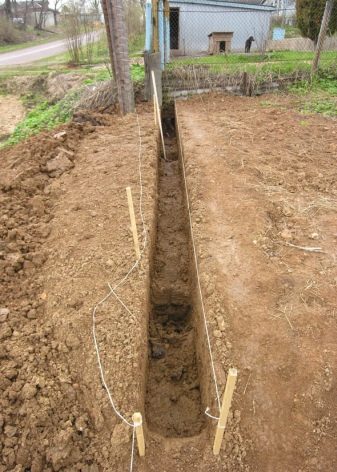
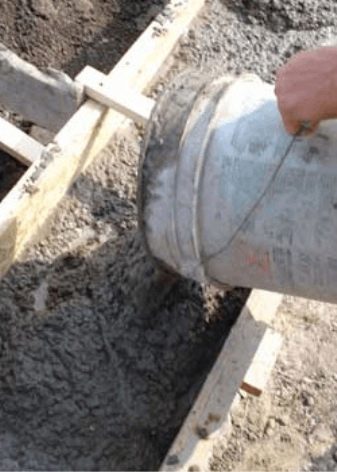
To achieve success, it is recommended, firstly, to use high-quality concrete, and, secondly, to knead the solutions not by hand, but with the help of mixers, that is, drills with special attachments.

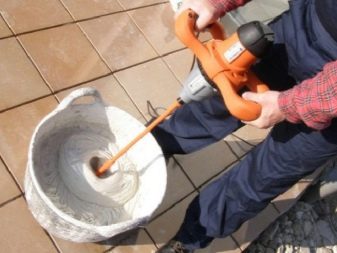
Buckets and trowels are other essential components. The first are hemispheres with wooden handles and are designed to make the distribution of the mortar over the masonry more uniform. Trowels, on the other hand, ensure the leveling of cement, remove its excess at the ends and at the joints, and help to saturate the seams with a solution. Careful blows with the back of the tool handle allow the bricks to be seated in exactly the designated places.
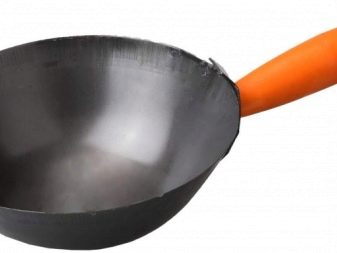
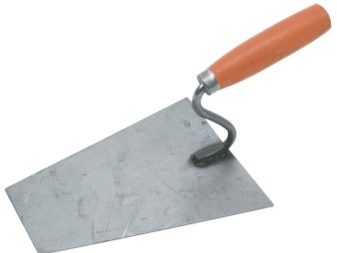
If the fence is supplemented with columns, the accuracy of their placement and the minimum deviation from a straight line is ensured due to the control of the corners by the building level. To break off a piece of the required size from a brick, professionals advise using a pickaxe.


The evenness of the front part of the masonry is verified using smooth slats from 120 to 200 cm in length. Using the ordering (rulers made of metal or wood, marked with a step equal to the sum of the thickness of the joints and the height of the bricks), you can control the quality of the masonry of a separate tier.

Also, when working, they use a standard cone, rolls of twisted cords, a chisel, a chisel.
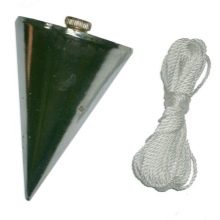
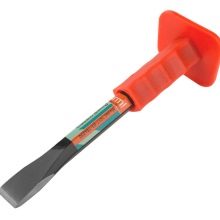
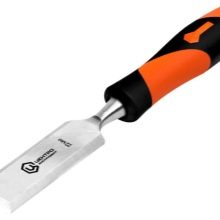
When the bricks are laid in the same direction as the entire masonry as a whole, the corresponding strip is called spoon, and when perpendicular to it - butt.
Important: brick fences cannot be made in ¼ bricks, only ½ and higher, otherwise they will not be reliable enough!

Pressing the layout requires saturating the vertical seams with mortar using a trowel; most often, a similar technique is needed to make full-joint masonry using a viscous mixture.Initially, a 15-20 mm layer of mortar is placed 10-15 mm from the border, and then 0.3 to 0.5 cm of the mixture is taken from the bricks of the previous row and transferred to the sidewalls. Pressing the block tightly with a trowel, they abruptly take out the tool, with its help they adjust the location of the element in the vertical and horizontal planes.

The "back to back" masonry method implies that the cement mortar is taken not with trowels, but directly with those bricks that need to be laid.
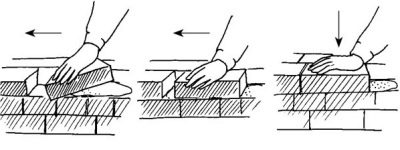
For your information: working with pillars that will be complemented by a gate or wicket, the reinforcement inside the structure must be brought almost to the very top. If you do not need to hold any additional elements, you can indent 0.4-0.5 m from the top, there is no risk in that.

In some cases, facade paints, whitewash or plaster are applied to the fences; options with the installation of canopies and awnings are quite widespread.
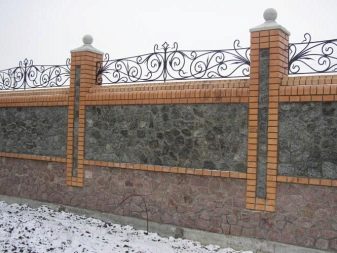

In cases where you cannot make a full-fledged brick fence (due to lack of funds), you can resort to imitation of it - full or partial. Such structures are made of high-class polypropylene, are resistant to the destructive effects of the external environment and, at the same time, are themselves environmentally and sanitary safe. Additionally, the quality of special panels can be improved by applying paint on them that suppresses peeling, fading, and slows down the loss of strength.
Important: the optimal choice of the type of material requires taking into account the weather conditions and the properties of the soil in a specific area.

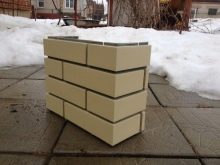
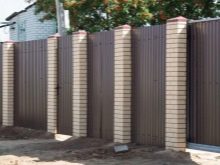
You can learn more about such structures and how to attach them from the following video.
Decor
Brick in combination with forging is perceived very chic; you can use it either as a decoration part, or as a functional part of the structure. You can vary the configuration and size of forged blocks, arrange them in an original way.
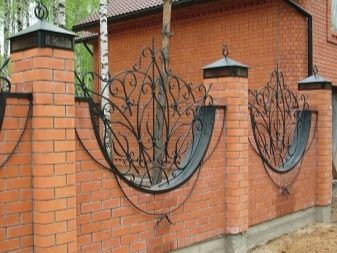
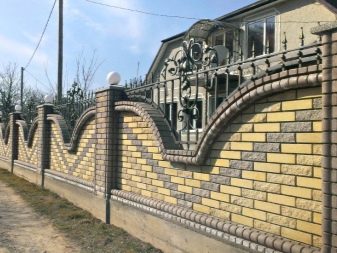
With a parapet scheme, forged rods and other decorating elements are placed on an unbreakable layer of brick.
Important: their height above the upper edge of the fence should not exceed 50 cm. Such a solution is outwardly attractive and, in addition, reliably stops most untrained intruders.
If a plinth (0.3-1.5 m) is placed above the main part of the bricks, a wide variety of forged blocks are also mounted on top of it. A characteristic feature of this approach is that the fence is transparent.
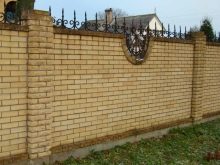
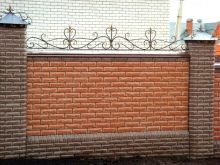
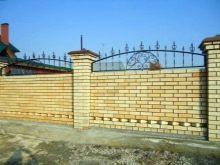
You can also choose the third method, in which brick pillars are combined with forged structures. It is forging in this version that the main part of the length falls, and bricks can be seen only in pillars or columns. And even the pillars themselves, the columns inside can have reinforcement, which increases their mechanical resistance.
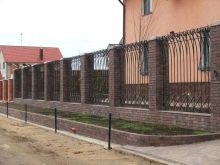

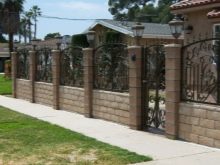
Brickwork can be complemented not only by a curly forged element, but also by wood; keep in mind that her presence does not always mean an opportunity to save money. Most often, such a step is taken, wishing to use a tree that is not needed for other purposes and at the same time create an effective, laconic architectural ensemble.

However, even if you limit yourself to just one brick, you can also achieve a very interesting result. Color solutions are quite diverse, and many novice experimenters are baffled by such a huge choice. They often try to reproduce the appearance of the facade coating in the house, for example, using shades of red with orange inclusions. Experiments with brown, yellow, white bricks are also widespread.
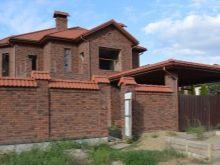
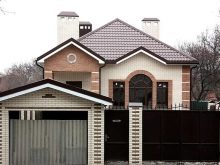

Wine tonality (Marsala) is perceived as very attractive, it is especially good to use such fences as accent elements. It makes sense to use a gray palette on areas decorated in a modern or urban style; this color is perfectly combined with the abundant use of concrete.
When choosing a combination in a country house, in a dacha property, be guided by the color scheme of the garden path and playground; in this case, it will be possible to use not just a different color, but also a completely different material to decorate the facade of the dwelling.
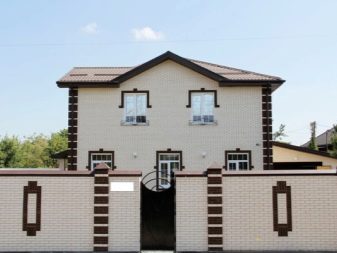
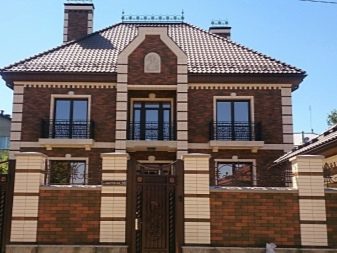
From ordinary and clinker bricks, you can build a "perforated" fence, built in a checkerboard pattern. Through the gaps, one can observe the courtyard and the street, the strength of the structure decreases somewhat, but this is not so significant.
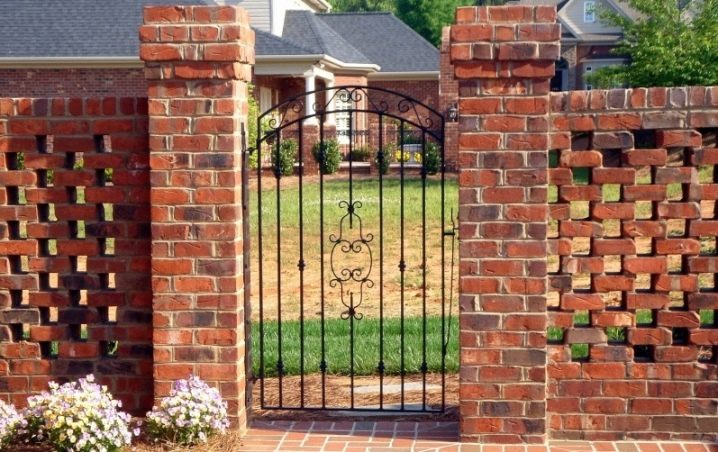
In addition to the listed options, you can decorate the fence with ordinary plants, imitations, stained glass and ceramics.

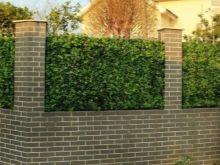
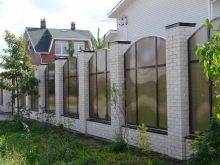
Returning to the topic of clinker, it is worth emphasizing that it not only looks very elegant, but also absorbs very little water, does not crumble as long as possible. The fence from it will last a long time, and the block can be very diverse in appearance - corrugated, rough, completely smooth. The clinker fence looks optimal both on ultra-modern villas and in imitations of old estates, even the simultaneous laying out of the walls of the house from it is permissible.
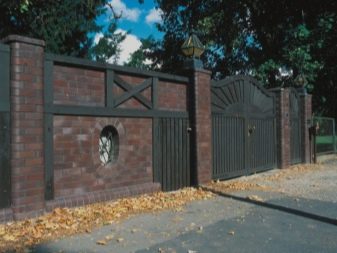
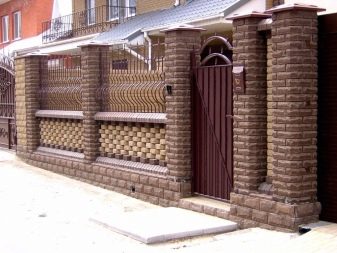
By using chipped bricks, impressive results can be achieved; the surface of a torn block is difficult to distinguish from natural stone. It is so nice to imagine yourself as residents of a medieval knight's castle!
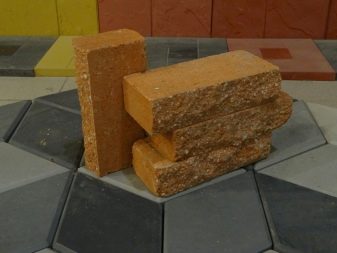
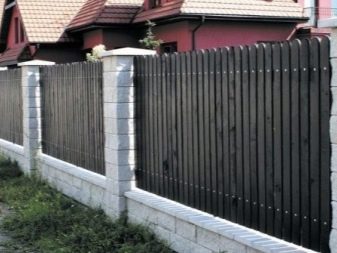
Silicate brick allows to completely abandon the special decor; for facade laying it is supplied mainly in white. The combination of white pillars with a red or brown array, or vice versa, looks nice.
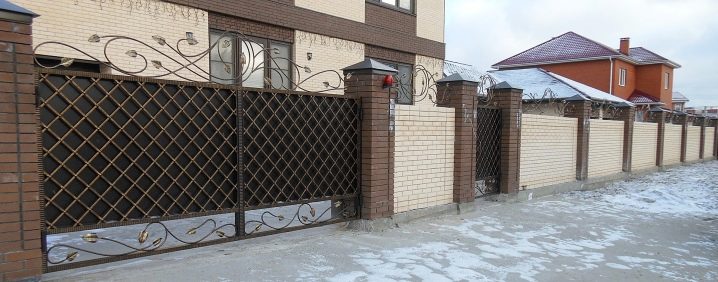
Facade timber (aka decorative timber or planken) is a subspecies of facing bricks; despite the increased price, it is quite reasonable to use it, there will be no risk of destruction of the supports and the entire structure as a whole.
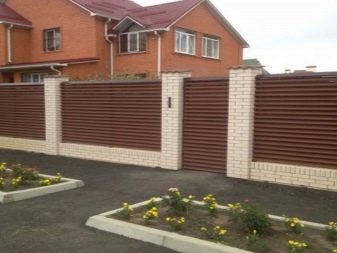
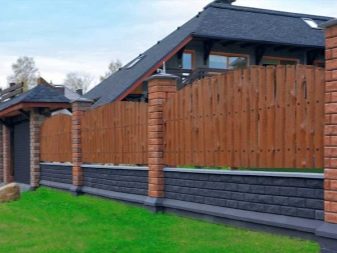
The type of fences called "bassoon" concludes our review. (literal translation from Italian - an armful of firewood). The appearance reproduces the atmosphere of natural stone, but the surface is sometimes slightly chipped. The mass of one block can reach 4 kg; products with chips are about 200 g lighter, and the combination of such options with each other is very nice.
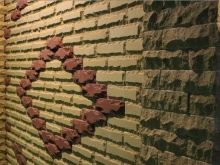
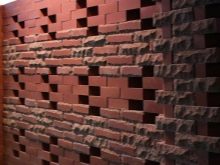

Combination of materials
Combined fences always look sleeker than those made from just one type of material. It is not difficult to increase the sophistication of the fence - you just need to supplement the brick with artistic forging.
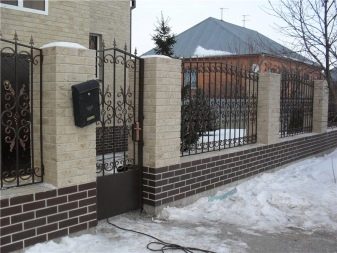
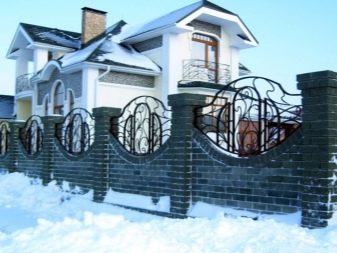
If you use a metal picket fence, you can save a lot of money. At the same time, such structures serve for a very long time, they are able to limit the observation from the outside of what is happening in the area, but at the same time, there is no complete overlap of the view. You can always choose an option that imitates brick or is in harmony with the appearance of the home.

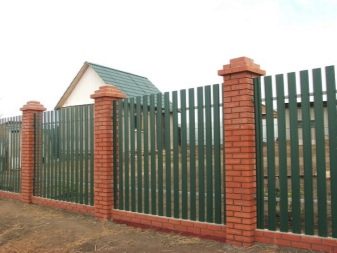
The advantage of a picket fence made of metal is a high level of safety - such structures cannot be scratched even on purpose.

But those who prefer to supplement fences with a wooden type of blocks, including with the help of lining, have their own weighty arguments. Taking natural wood, you can significantly improve the soundproofing qualities of the fence. And it will be more effective to stop strong winds than a brick wall.
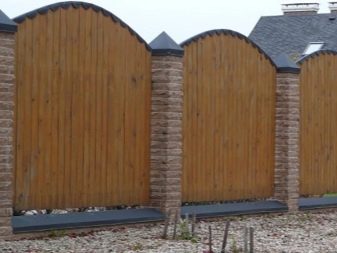
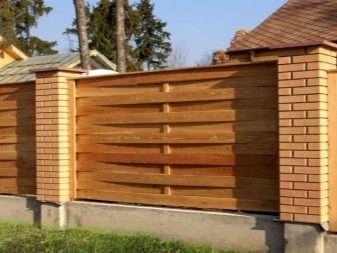
It should be borne in mind that a wooden canvas, no matter how light it may seem in itself, increases the mass of the fence. Therefore, all places where such elements are used will have to be equipped with a more powerful foundation. The situation is similar in the case of massive steel parts.

Beautiful examples
It is often thought that a brick fence is always a tall and solid structure, outwardly looking indestructible. However, there are completely different options that look very original. For example, a very low fence with posts raised in several places. However, even with the traditional height of the barrier, its appearance is unique. Here the builders were clearly inspired by the idea of combining moderately red and whitewashed sections of the wall.As a result, they have a great looking barrage that attracts rave looks.
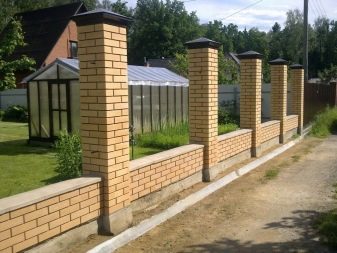
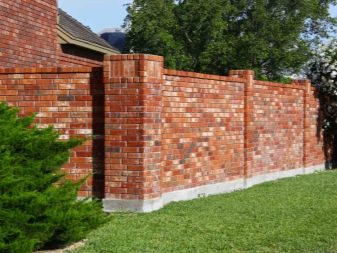
Another attractive solution is to use expressive dark accents that are in harmony with the tone of the upper plank, which is placed above all brick rows. It is important not to introduce too many dark elements here, otherwise you will get a gloomy look.

Some designers believe that individual bricks do not have to be straight. Using decorative products of complex geometric shapes, you can create a delightful ornament. Its attractiveness will only increase with the correct selection of color contrasts with the surrounding details.
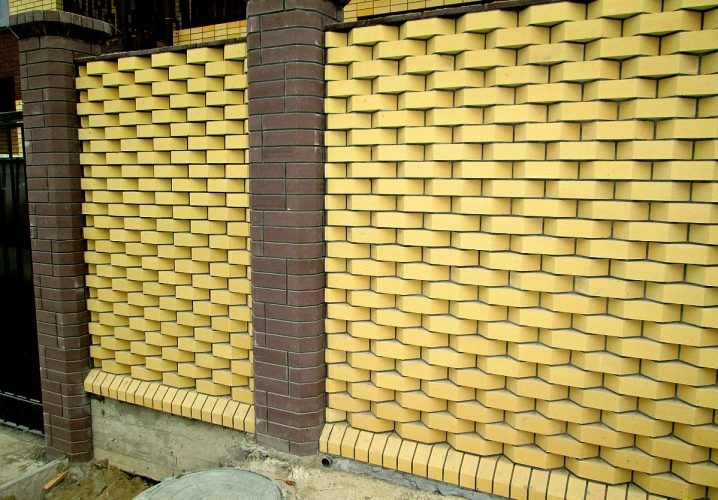
Choosing a brick
How to choose the right brick for building a fence is described in detail in the video below.



































































The comment was sent successfully.